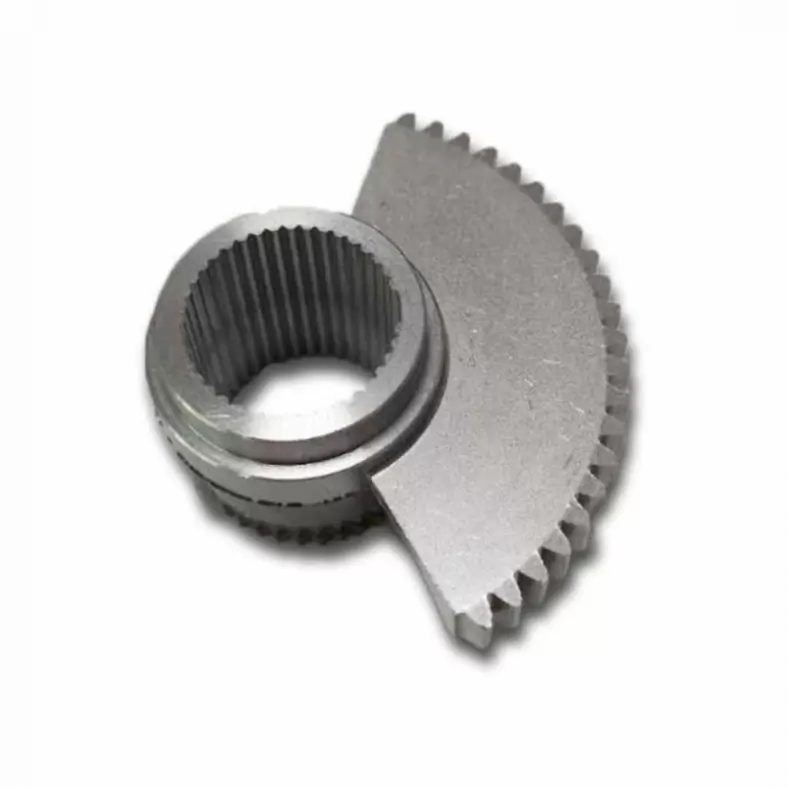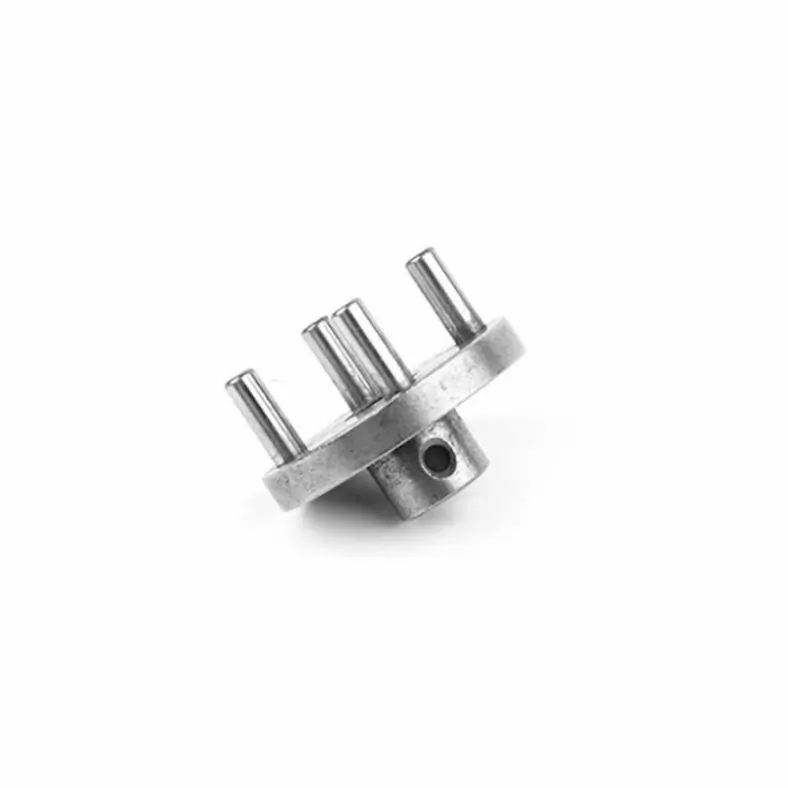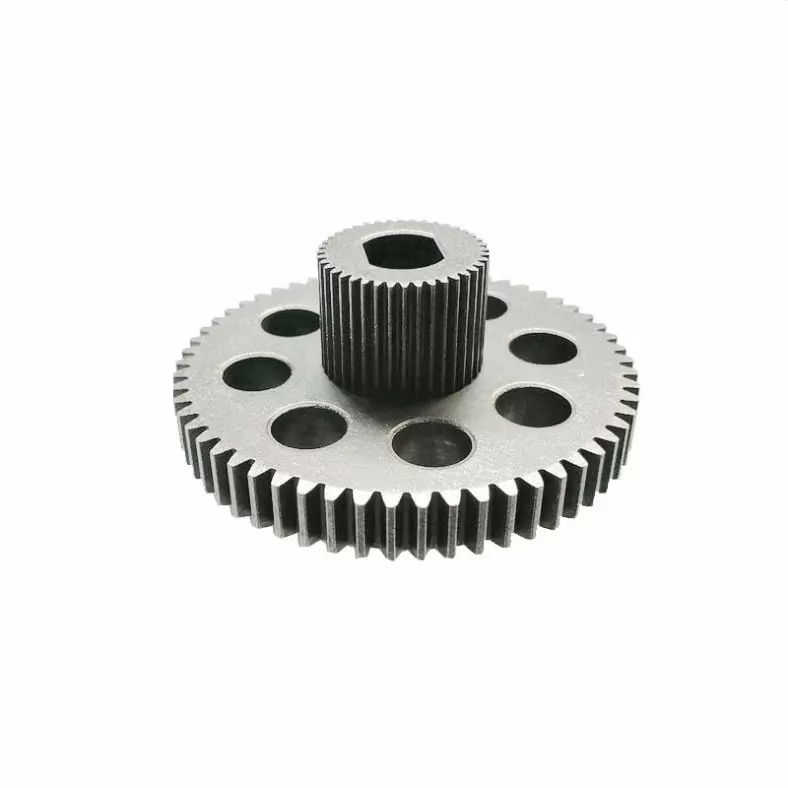
Gears are the unsung heroes of the mechanical world, serving as crucial components in various industries like automotive, aerospace, robotics, and industrial machinery. The smooth functioning of mechanical systems heavily relies on the precision and performance of gears. As the demand for high-quality gears increases, gear manufacturers must employ advanced gear machining methods to ensure optimal performance and reliability.
In this comprehensive article, we will explore the three essential methods for gear machining: gear hobbing, gear shaping, and gear grinding. These methods are the cornerstones of gear production, each offering its unique advantages and contributing to enhancing precision, efficiency, and innovation in the field of mechanical engineering.
Gear Hobbing: The Workhorse of Gear Manufacturing
Gear hobbing is one of the most widely used and efficient methods for gear machining. This process allows the production of a wide range of gear types, including spur, helical, and worm gears. Gear hobbing is renowned for its versatility, making it a preferred choice for mass production of gears.
1.The Gear Hobbing Process:
- Preparing the Workpiece: Gear hobbing starts with selecting the appropriate gear blank, which is typically a cylindrical piece of metal. The choice of material is essential and depends on factors like load-bearing capacity, wear resistance, and heat treatment capabilities.
- Selecting the Hob: The hob is a specialized cutting tool with helical teeth that match the desired gear tooth profile. Choosing the correct hob is crucial as it determines the final specifications of the gear, including the number of teeth, module (pitch), and pressure angle.
- Setting up the Hobbing Machine: The hob is mounted on the hobbing machine, and the gear blank is precisely positioned on the work spindle. The CNC system of the hobbing machine controls the cutting process, ensuring accuracy and consistency.
- Gear Tooth Cutting: As the gear blank rotates on the work spindle, the hob reciprocates axially across the gear’s face. The hobbing machine gradually cuts into the gear blank, generating the gear tooth profiles that enable power transmission.
- Finishing and Inspection: After the hobbing process, the gears may undergo additional finishing operations like deburring, heat treatment, and grinding to improve surface finish and dimensional accuracy. Comprehensive inspections are performed to ensure the gears meet the required specifications.
2.Advantages of Gear Hobbing:
- a) High Production Efficiency: Gear hobbing is a relatively fast and efficient process, making it ideal for mass production of gears in large quantities.
- b) Versatility: The method can produce a wide range of gear types and sizes, making it adaptable to various applications.
- c) Excellent Surface Finish: Gear hobbing results in smooth gear surfaces, reducing the need for extensive finishing operations.
- d) Cost-Effective: Gear hobbing is a cost-effective method, especially for high-volume gear production.
- e) Low Tooling Costs: The hobs used in gear hobbing are relatively simple in design, leading to lower tooling costs.
- f) Applicability to Various Gear Types: Gear hobbing is suitable for manufacturing spur gears, helical gears, worm gears, and more, covering a broad spectrum of gear applications.
Gear Shaping: Precision Engineering for Superior Performance
Gear shaping is another essential gear machining method, widely used for producing external spur and helical gears. It is renowned for its ability to achieve high precision and dimensional accuracy, making it suitable for critical applications where performance and reliability are paramount.
1.The Gear Shaping Process:
- Preparing the Workpiece: Similar to gear hobbing, the gear shaping process begins with selecting the appropriate gear blank and ensuring it is securely mounted on the gear shaping machine.
- Selecting the Shaper Cutter: The shaper cutter is a specialized cutting tool with teeth corresponding to the desired gear tooth profile. The choice of cutter is crucial to achieving the required gear specifications.
- Gear Tooth Cutting: In gear shaping, the shaper cutter moves in a back-and-forth motion across the gear’s face, gradually forming the gear tooth profiles. The gear blank’s rotation, synchronized with the cutter’s motion, ensures precise and consistent gear teeth.
- Finishing and Inspection: As with gear hobbing, gear shaping products undergo finishing processes and meticulous inspections to meet the required specifications.
2.Advantages of Gear Shaping:
- a) Superior Precision: Gear shaping is renowned for producing gears with exceptional dimensional accuracy and precise tooth profiles, contributing to optimal performance.
- b) Noise Reduction: The smoother tooth surfaces achieved through gear shaping result in quieter gear operation.
- c) Suitable for Medium to Small Batches: Gear shaping is well-suited for manufacturing gears in smaller quantities or when gear hobbing may not be practical.
- d) Better Surface Finish: Gear shaping yields improved surface finish compared to gear hobbing, reducing the need for additional finishing processes.
- e) Consistency: Gear shaping ensures consistent gear profiles across multiple gears, leading to smoother gear meshing and better performance.
- f) Customizable Gear Designs: Gear shaping allows for the production of customized gear profiles, making it suitable for specialized applications.
- g) Minimal Tool Wear: The cutting action in gear shaping is relatively gentle, resulting in reduced tool wear and extended tool life.
Gear Grinding: The Art of Precision and Surface Quality
Gear grinding is a specialized and sophisticated gear machining method primarily used for finishing gears with exceptional precision and surface quality. It is often employed when gears require extremely tight tolerances or specific surface roughness for smoother and quieter operation.
1.The Gear Grinding Process:
- Preparing the Gear: Before the grinding process, the gear blank undergoes heat treatment to ensure the required hardness and toughness for the grinding process.
- Mounting the Gear: The gear is securely mounted on a grinding machine using a specialized chuck or fixture.
- Gear Tooth Grinding: Gear grinding machines utilize abrasive wheels to remove tiny amounts of material from the gear teeth. The grinding process requires meticulous attention to detail to achieve the desired precision.
- Final Inspection: After gear grinding, the finished gears undergo comprehensive inspection to ensure they meet the required specifications.
2.Advantages of Gear Grinding:
- a) Exceptional Precision: Gear grinding can achieve extremely tight tolerances and precise tooth profiles, resulting in gears with unparalleled performance.
- b) Improved Surface Quality: The grinding process imparts a superior surface finish, contributing to reduced friction and wear during gear operation.
- c) Versatility: Gear grinding can be applied to various gear types, including spur, helical, and bevel gears.
- d) Noise Reduction: The smoother gear tooth surfaces achieved through grinding result in quieter gear operation.
- e) Extended Gear Life: Gear grinding’s precise tooth profiles and superior surface finish contribute to longer gear life and reduced maintenance costs.
- f) Elimination of Distortions: Gear grinding ensures the elimination of distortions that may arise during heat treatment or other gear manufacturing processes.
- g) Consistent Gear Geometry: Gear grinding ensures consistent gear tooth geometry, resulting in uniform gear performance.
Advancements in Gear Machining: Beyond Traditional Methods
While gear hobbing, gear shaping, and gear grinding are the tried-and-true methods of gear machining, technological advancements have led to the development of new and innovative techniques. These cutting-edge methods aim to address specific challenges, improve efficiency, and enable the production of gears with even higher precision.
1.High-Speed Gear Cutting (HSGC):
High-speed gear cutting (HSGC) is a modern gear machining method that combines the principles of gear hobbing and milling. It involves using a specialized HSGC tool, which is a high-speed rotating cutting tool with multiple cutting edges. This method significantly reduces the machining time and provides excellent precision and surface finish.
2.CNC Gear Shaping:
Computer Numerical Control (CNC) gear shaping integrates automation and advanced control systems into the gear shaping process. CNC gear shaping machines can precisely and consistently produce complex gear profiles, reducing setup time and enhancing production efficiency.
3.Electrochemical Machining (ECM):
Electrochemical machining (ECM) is a non-traditional gear machining method that utilizes the principle of electrochemical dissolution to remove material from the gear’s surface. ECM offers exceptional precision and is particularly suitable for producing gears with intricate and delicate features.
4.Shaving and Honing:
Shaving and honing are finishing processes used to improve the surface finish and accuracy of gear teeth. Shaving removes a thin layer of material from the gear teeth, reducing surface roughness and improving gear meshing. Honing is a fine abrasive process that further refines the gear tooth profile and surface finish.
5.Superfinishing:
Superfinishing is a high-precision machining process that uses abrasive stones or films to create a mirror-like surface finish on the gear teeth. This process enhances gear performance by reducing friction and wear, resulting in quieter and more efficient gear operation.
6.3D Printing/Additive Manufacturing:
3D printing, also known as additive manufacturing, is revolutionizing gear production by enabling the creation of complex geometries and customized designs. While 3D printing is not yet widely adopted for mass gear production, it shows promising potential for rapid prototyping and custom gear manufacturing.
Selecting the Optimal Gear Machining Method
Selecting the optimal gear machining method for a particular application involves considering various factors, including gear specifications, production volume, required precision, material properties, and budget constraints. Gear manufacturers must carefully analyze these factors to make informed decisions that align with the desired gear performance and quality.
1.Gear Specifications:
The gear specifications, such as the number of teeth, module (pitch), pressure angle, and gear type (spur, helical, worm, etc.), play a significant role in determining the most suitable gear machining method. While gear hobbing is versatile and can accommodate various gear types, gear shaping may be preferred for gears requiring superior precision and surface finish.
2.Production Volume:
The production volume is a crucial consideration when choosing a gear machining method. Gear hobbing is the most efficient method for mass production, as it allows for the simultaneous cutting of multiple gear teeth. For smaller production runs or specialized gear applications, gear shaping or grinding may be more appropriate.
3.Required Precision:
The required precision and dimensional accuracy of the gears influence the choice of gear machining method. Gear shaping and grinding offer superior precision and surface finish compared to gear hobbing, making them suitable for gears used in high-performance and critical applications.
4.Material Properties:
The material properties of the gear blank, such as hardness, toughness, and machinability, should be considered when selecting the gear machining method. Some materials may be better suited for certain machining processes, influencing the overall gear manufacturing approach.
5.Budget Constraints:
Budget constraints play a significant role in determining the gear machining method. While gear hobbing is generally cost-effective for high-volume production, gear grinding and shaping may involve higher tooling and setup costs but provide superior precision and surface quality.
Sourcing Simplified – Start Your Next Project With Be-Cu
Gear machining plays a pivotal role in the production of high-quality gears, which are vital for the smooth functioning of various mechanical systems across industries. The three essential methods of gear hobbing, gear shaping, and gear grinding are the backbone of gear manufacturing, providing manufacturers with the tools to create gears with outstanding precision, efficiency, and performance.
Each method has its unique advantages, making them suitable for different gear types, production volumes, and precision requirements. Gear hobbing excels in efficiency and versatility, gear shaping in precision engineering, and gear grinding in superior surface quality. As technology continues to advance, new and innovative gear machining methods, such as high-speed gear cutting, CNC gear shaping, and electrochemical machining, are emerging, taking gear manufacturing to new heights of precision and innovation.
By leveraging these essential methods and embracing advancements in gear machining, manufacturers can drive progress in mechanical engineering and ensure the seamless functioning of diverse mechanical systems, contributing to a world of efficient and reliable machinery. The art of gear machining continues to evolve, fueling innovation and enhancing the performance of gears in the ever-evolving landscape of mechanical engineering.
No matter what sort of gears you need, Be-Cu can fabricate them.
We’re experts at producing custom, precision gears in a variety of materials, and we simplify custom part sourcing with intelligent, streamlined, automated workflows. Be-Cu.com is your operating system for custom manufacturing that makes gear and mechanical part procurement faster, easier, and more efficient.Click Our Gear Machining Case Studies:





